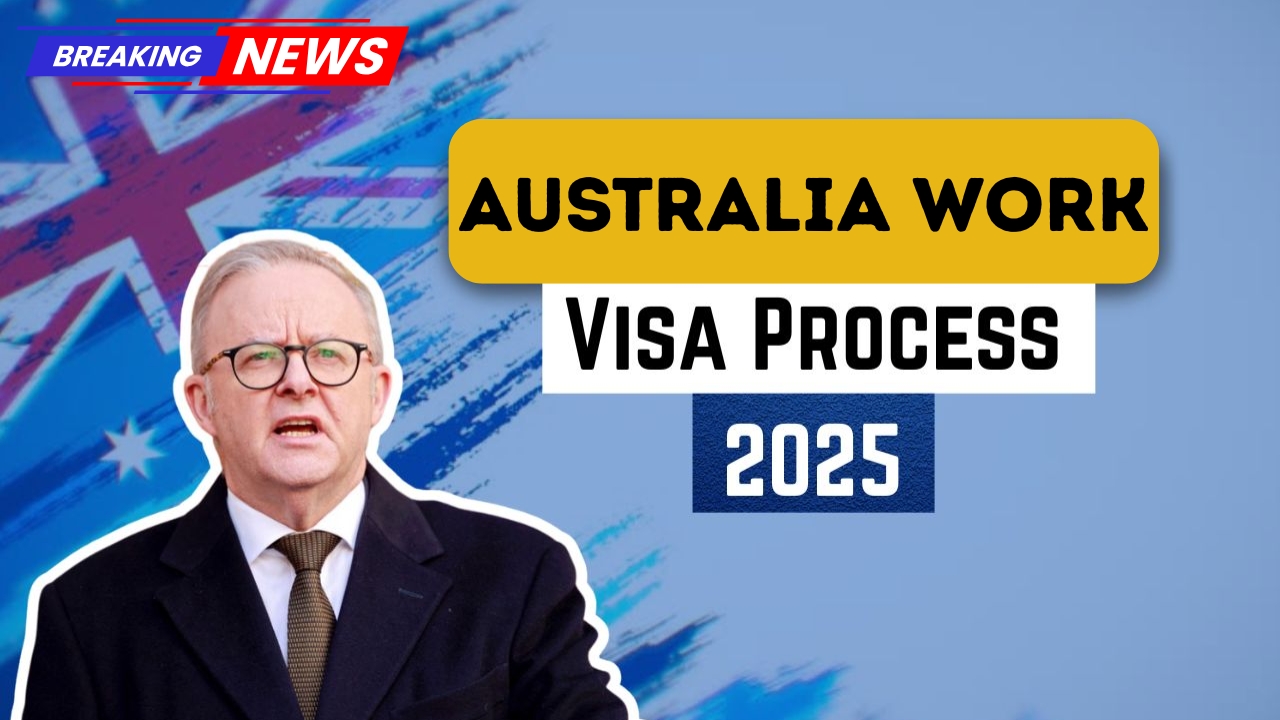If you’ve been thinking about working in Australia in 2025, then you’re definitely not alone. Honestly, the country continues to be one of the most attractive destinations for skilled professionals, students transitioning into careers, and even seasonal workers looking for temporary opportunities. With a strong economy, high living standards, and the promise of new career prospects, Australia remains high on the global migration list. But before you get excited about beaches, barbecues, and bustling cities, you really need to understand how the work visa system works in 2025.
And trust me, it’s not as intimidating as it first looks. Yes, there are forms, fees, and sometimes long waiting times, but with the right preparation, the process can be surprisingly smooth. So, let’s break this down step by step — eligibility, process, and all the key updates you should know for 2025.
Why Australia’s Work Visa Is in High Demand?
Well, the short answer is opportunity. Australia is consistently looking for skilled workers to fill shortages in sectors like healthcare, IT, engineering, agriculture, and construction. The government regularly updates its Skilled Occupation List (SOL), which tells you exactly which professions are most in demand.
On the flip side, this also means that if your profession is not on the list, your chances of securing a visa may be lower. But don’t get discouraged — Australia also has employer-sponsored visas, temporary work visas, and regional visas that can still open doors for people with different skill sets.
Eligibility for an Australian Work Visa in 2025
Alright, let’s get to the heart of it. Who is actually eligible to apply? The criteria depend on the type of work visa you’re targeting, but the general eligibility remains somewhat similar across most categories.
Here’s a simple breakdown:
| Eligibility Factor | Requirement in 2025 |
|---|---|
| Age Limit | Typically under 45 years for skilled visas |
| Skills & Qualifications | Must match an occupation on the Skilled Occupation List (SOL) |
| English Proficiency | IELTS, PTE, or equivalent (minimum scores apply) |
| Health & Character | Mandatory medical and police checks |
| Work Experience | Usually 2–5 years of relevant professional experience |
| Sponsorship/State Nomination | Required for employer or regional visas |
To be fair, meeting all the above doesn’t guarantee approval. But it does place you in a strong position.
The Application Process in 2025
Here comes the practical part. The Australian visa process is structured but can feel lengthy if you’re not prepared. Here’s the simplified journey:
- Check Eligibility First
Review the Skilled Occupation List and visa categories (Skilled Independent Subclass 189, Skilled Nominated Subclass 190, Temporary Skill Shortage Subclass 482, etc.). - Skill Assessment
Have your qualifications assessed by a recognized authority to ensure they meet Australian standards. - Submit an Expression of Interest (EOI)
Through the SkillSelect portal, you essentially “raise your hand” to show interest in migrating. - Receive an Invitation to Apply
If selected, you’ll get an invitation, and only then can you submit your official visa application. - Gather Documents
Academic certificates, work experience letters, proof of English proficiency, health checks, and police clearance certificates. - Submit Application Online
Pay the visa fee and upload all documents on the Department of Home Affairs portal. - Wait for Processing
Depending on the visa type, this can take a few weeks to several months. Patience is key here. - Visa Grant
Once approved, you’ll receive your visa grant notice, and yes — that’s when the excitement really kicks in.
Key Updates for 2025
Now, let’s talk about what’s actually new this year. Because policies do change, and you don’t want to rely on outdated info.
- Faster Processing for Priority Sectors: Healthcare and IT workers are getting faster visa processing due to urgent skill shortages.
- Points System Adjustments: Additional points are now awarded for applicants willing to work in regional areas, which is Australia’s way of encouraging population spread.
- Increased English Test Options: Besides IELTS and PTE, more test providers have been recognized for visa purposes in 2025.
- Higher Financial Proof: Applicants may need to show stronger financial capacity to support themselves initially, especially for temporary visas.
- Digital Transparency: More of the application steps are digitized, making tracking applications easier (but also less forgiving if you miss a document).
Honestly, these changes are not shocking, but they do show that Australia is becoming more selective and practical about the people it admits.
Applying for an Australian work visa in 2025 might feel like a marathon, but it’s worth every bit of effort if you’re serious about building your career Down Under. The key is preparation — know the eligibility, stay updated on the rules, and don’t cut corners with documentation.
On the bright side, once you get through the process, you’ll not only have access to one of the world’s most stable job markets but also to an incredible lifestyle that blends city sophistication with natural beauty. And honestly, isn’t that the dream?
FAQs
1. What is the age limit for applying for an Australian skilled work visa in 2025?
Most skilled visas require applicants to be under 45 years old.
2. Do I need IELTS for an Australian work visa?
Yes, English proficiency proof is mandatory, though other tests like PTE are also accepted.
3. How long does it take to process an Australian work visa?
Processing can take anywhere from a few weeks to several months, depending on the visa type.
4. Can I apply without a job offer?
Yes, for certain visas like the Skilled Independent Subclass 189, you don’t need an employer’s sponsorship.
5. What if my occupation is not on the Skilled Occupation List?
You may still qualify under employer-sponsored or temporary visa categories.




